Research Article 
 Creative Commons, CC-BY
Creative Commons, CC-BY
Socio-Demographic, Health Related, Reproductive, Musculoskeletal Pain Related Parameters and Treatment Seeking Patterns among Postmenopausal Women from Dhaka City, Bangladesh
*Corresponding author: ASM Giasuddin, Professor of Biochemistry & Immunology & Director, Medical research Unit (Retd); Presently, Senior Consultant in Laboratory Medicine (Biochemistry & Immunology), Department of Laboratory Medicine, Impulse Hospital, Im HS&RC Ltd, 304/E Tejgaon Industrial Area, Dhaka-1208, Bangladesh.
Received: August 07, 2023; Published: August 17, 2023
DOI: 10.34297/AJBSR.2023.19.002646
Abstract
Background: Literature review suggested that limited or no studies have been reported in post-menopause women on Musculoskeletal Disorders (MSDs) manifesting as Musculoskeletal Pain (MSP) from Bangladesh.
Objective: To determine the socio-demographic, health related, reproductive, MSP related and treatment seeking patterns among postmenopausal women from selected areas of Dhaka City, Bangladesh.
Materials and Methods: Data were collected from 101 postmenopausal women selected by convenient sampling procedure for six months (November 2021 to April 2022) from Dhaka city. Data were analyzed by using SPSS programme version 26.
Results: The age range of respondents (n=101) was 42-81 years with mean age ±SD 55.75±8.51 years. Among them, 42.6% (n=43) and 39.6% (n=40) were in the age range of 52-61years and 42-51years respectively. Majority were housewives (n=85,80.20%), Muslims by religion (n=89,88.8%) and nuclear family (n=76,75.2%) with 54(53.5%) of them having 2-4 children. Their education levels varied from illiterate up to graduation and monthly income varied from Tk 9000.00 to Tk 108000.00. Their BMI varied from 25.0-29.9 (overweight) in 54(53.5%) and ≥30.0 (obese) in 6(5.9%) respondents with 81(80.2%) did have daily exposure to sunlight, but 82(81.2%) did not do any type of physical exercise. About co-morbidity, 81(80.8%) and 54(53.4%) had hypertension and diabetes respectively. The onset period varied from 9-17 years and onset of menopause varied from 39-53years. Among the 88(87.1%) respondents that had MSP, 26(29.5%) had neck, 24(27.3) had shoulder, 6(6.8%) had upper back, 4(5.5%) had elbow joint, 9(10.2%) had wrist hand joint, 53(60.2%) had low back, 10(11.47%) had hip-thigh, 50(56.8%) had knee and 17(19.3%) had ankle-feet joint MSP. Among the 88 respondents, 3(3.47%) had mild pain, 57(64.87%) had moderate pain and 28(31.87%) had severe pain. Approximately 60(68.27%), 17(14.37%) and 11(12.37%) experienced intermittent, constant and occasional pain respectively. The maximum pain time was morning (n=36, 40.9%). The period of suffering varied from 1-3 (n=12,136%), 4-6 (n=11,12.5%), 7-9 (n=27,8.0%), 10-12 (n=7,8.0%) and >12months (n=51,58.0%). Among 81respondents received treatment, 20(24.7%) taken medication, 25(30.9%) taken physiotherapy and 36(44.4%) taken both medication and physiotherapy. Among them 51(63%) had improved, 10(12.3%) had worsened and 20(24.7%) had unchanged outcome after treatment.
Conclusions: Neck, shoulder, lower back and knee were affected most due to MSP. Major factors responsible for MSP were age and lack of physical exercise among the respondents. The significant associations of these factors with MSP should be investigated in these respondents.
Keywords: Post-menopause, Musculoskeletal disorder, Musculoskeletal pain
Introduction
Menopause is the natural biological phenomenon in the women’s life marked by entering into new phase of life after the end of women’s reproductive age. Menopause is the stage when menstrual cycle stops permanently for more than 12 months and level of estrogen and progesterone drops which are the most important hormones in female body [1,2].
Musculoskeletal disorders (MSDs) are diverse group of conditions with regard to their pathophysiology but are linked anatomically by musculoskeletal pain (MSP) and physical function. MSP has a higher prevalence in postmenopausal women as compared to premenopausal women suggesting that the decline in the reproductive hormones is associated with increased pain perception [3]. The prevalence of MSDs in postmenopausal women were reported to be 27.3% in Nepal and 53.3% in northern india [4]. MSP is generally associated with reduction of the ovarian function, where there is decline in the production of mainly estrogen hormone [5]. Estrogen deficiency leads to impairment in the muscle performance and functional capacity and these changes cause early degeneration in postmenopausal women [6].
MSDs consist of wide range of degenerative inflammatory conditions, affecting muscle tendons, ligaments, joints, peripheral nerves and supporting blood vessels [7]. MSDs are clinical conditions including tendonitis, bursitis, nerve compression disorders, intervertebral disc problems and the destruction of articular cartilage [8]. In developing countries, poverty, malnutrition, infectious diseases, and inadequate medical equipment may have a role in the occurrence of MSDs. MSP had no relationship with smoking, opium consumption, hypertension, level of education and dyslipidemia [8].
The majority of MSP in MSDs found in neck, lumbar region, hip and knee and most of these conditions are left over to be developed as chronic pain or recurrent MSP even beyond the menopausal period imposing the great burden to individual, family and society as well [9]. The prevalence of MSP among postmenopausal women was found to be 56% with mean age of onset of menopause as 46 years. Region wise analysis of MSP among postmenopausal women showed that back (57%) and knee (72%) pain to be most prevalent [6]. The women in menopausal stage are even more prone to suffer from these complaints due to decreased level of estrogen, ageing factor and lifestyle change such as lack of physical activity, no exposure to sunlight and obesity [10].
At menopause, women are known to experience a number of physiological and psychological changes. These include musculoskeletal changes such as osteoporosis, muscle atrophy and muscle weakness symptoms that are more or less associated with advancing age and possibly due to estrogen deficiency [11,12]. Some studies suggested increases in Body Mass Index (BMI) or total fat mass with menopause [13]. However, studies that directly investigated the association of overall and central obesity with MSP in postmenopausal women are scarce [11].
The most common complaints among respondents were reported to be Low Back Pain (LBP) (39%), knee pain (22%), neck pain (16%) and shoulder pain (9%). Similarly, postmenopausal women also had same pattern of pain in low back, knee, neck and shoulder with prevalence of 37.7%, 24.6%, 14.8% and 11.5% respectively. The most common diagnosis was spondylosis for LBP and neck pain, osteoarthritis for knee pain and frozen shoulder for shoulder pain. The musculoskeletal complaint at different site of body was associated with osteoporosis risk, exercise status and sunlight exposure but was not associated with menopausal status. The obese women were more likely to have shoulder pain and knee pain. The severity of MSP was associated with co-morbid conditions, menopausal status and depressed mood due to pain [14]. Several studies have shown that negative attitudes toward menopause have an increasing effect on the severity of specific menopausal symptoms that leads to more complaints [14,15].
In Bangladeshi population, wide cultural diversity, inequality in socio-economic status and gender are some of the sensitive multi factorial determinants that influence the menopausal health [16]. Postmenopausal symptoms are generally ignored in rural, suburban as well as urban Bangladesh, even if they suffer from symptoms silently [17]. There is under‑reporting of symptoms due to socio- cultural factors as well due to lack of awareness and knowledge about this conditions. Therefore, the present study titled “Socio-demographic, health related, reproductive, musculoskeletal pain related parameters and treatment seeking patterns among postmenopausal women from selected areas of Dhaka City, Bangladesh” was undertaken and the findings were reported here.
Materials and Methods
i. Study Design: Descriptive Cross-Sectional Study.
ii. Study Area: Selected areas of Dhaka city, Bangladesh.
iii. Study Period: Six months from November 2021 to April 2022.
iv. Study Population: Women in postmenopausal phase within age range 42 years or above.
v. Selection (inclusion) Criteria: Medically stable, women who have started their menopause, aged 42 years and above.
vi. Selection (Exclusion) Criteria: Women not willing to participate due to personal reason, women diagnosed with any medical condition of neurological, critically/severely mental disorder/disease, women diagnosed with malignancy and bedridden women.
vii. Sample Size: Due to limitations of time and finance, sample size was limited to 101.
viii. Sampling Technique: Convenient sampling technique. Samples were selected purposively to interview the study population considering the inclusion and exclusion criteria.
ix. Data Collection Methods & Instruments: Data collection procedure involved face to face interview with structured questionnaire; consent form, pen, pencil, paper, weight machine, height measuring tape, etc.
x. Data Management & Analysis: Data were analyzed with the software “Statistical Package for Social Sciences (SPSS)” programme Version 26. Data was numerically coded and captured in Microsoft Excel, using an SPSS software program 26 version. Microsoft Office Excel 2016 were used to prepare the tables, figures, etc.
xi. Ethical Issues: All ethical issues related to research involving human subjects were addressed according to guidelines of the tEthical Review Committee of World Medical Association (WMA) [18].
Results
The “Questionnaire” developed was used to obtain information about the respondents as the following: socio-demographic information, health related factors, reproductive parameters, MSP related parameters and treatment seeking patterns. The information obtained were analyzed as noted down.
Socio-Demographic Characteristics
The mean age±SD of the respondents (n=101) was 55.75±8.51 years, Approximately, 39.6% (n=40) was among the age group 42- 51 years, 42.6% (n=43) was among the age group 52-61 years, 9.9% (n=10) was among the age group 62-71 years, 7.9% (n=8) was among the age group 72-81 years (Table 1).
Marital Status: Regarding distribution of respondents (n=101) by marital status, 91.1% (n=92) were married and 8.9%(n=90) were unmarried. Number of Children: Among the 101 respondents; approximately 14.9% (n=15) had one child or no child, 53.5% (n=54) had 2-4 children and 31.7% (n=32) had 5-7 children. Among them the 2nd group was the highest in percentage. Education Level: About the education level of respondents, approximately 23.8% (n=24) were illiterate, 24.8% (n=25) were primary, 25.7% (n=26) were Secondary, 17.8% (n=18) were Higher Secondary, 6.9% (n=7) were Graduation, 1% were post-graduation and above. The third group was the highest in percentage. Body Mass Index (BMI) Approximately 3% (n=3) had BMI <18.5 (underweight), 37.6% (n=38) had BMI ranged 18.5-24.9 (normal), 53.5% (n=54) had BMI ranged 25-29.9 (overweight) and 5.9% (n=6) was obese respondents. Majority of respondents were overweight (Table 2).
Occupation: About respondents (n=101) occupation, approximately 84.2% (n=85) were housewife and 15.8% (n=16) were other occupations. The first group was the highest in percentage. Religion: According to religion, approximately 88.1% (n=89) were Muslims and 11.9% (n=12) were others. The first group was the highest in percentage. Family Type: Approximately 75.2% (n=76) were nuclear and 24.8% (n=25) were join family type. The first group was the highest in percentage. Income Source: Regarding source income, approximately 38.6% (n=39) had source of income as their husband, 21.8% (n=22) were oneself, 36.6% (n=37) were children and other sources were 3% (n=3). The first group was the highest in percentage. Monthly Income: Distribution of respondents (n=101) by monthly family income showed that approximately 41.6% (n=42) were among the income range 9000-28000 taka, 32.7% (n=33) were in the income range 29000-48000 taka, 16.8% (n=17) were in the income range 49000-68000 taka, 5.9% (n=6) were in the income range 69000-88000 taka and 3% (n=3) were in the income range 89000-108000 taka. The first group was the highest in percentage. Health Related Factors: Respondents (n=101) by sunlight exposure indicated that 80.2% (n=81) had daily exposure to sunlight whereas 19.8% (n=20) didn’t have everyday sunlight exposure. Respondents (n=101) by calcium supplement showed that 77.2% (n=78) used to take calcium supplementation and 22.8% (n=23) didn’t use to take calcium supplementation. Distribution of respondents by exercise status (n=101) showed that only 18.8% (n=19) of women used to do physical exercise whereas 81.2% (n=82) didn’t do any type of physical exercise. About co-morbidities in respondents (n=101), 80.80% had hypertension, 53.40% had diabetes, 9.60% had respiratory disease, 16.40% had heart disease and 6.80% had chronic kidney disease. Reproductive Parameters: Respondents (n=101) by onset of period indicated that approximately 8.9% (n=9) was among onset of period at age 9-11 years, 81.2% (n=82) had onset of period at age 12-14years and 9.9% (n=10) had onset of period at age15-17 years. Regarding onset of menopause among the 101 respondents, approximately 19.8% (n=20) was among the age 39-43years, 61.4% (n=62) was among the 44- 48 and 18.8% (n=10) was among the age 49-53 years (Figure 1).
Musculoskeletal Pain (MSP) Related Patterns
Regarding (MSP) among 101 respondents, approximately 87.1% (n=88) had MSP and 12.9% (n=13) had no MSP. The patterns of pain among the 88 respondents are shown in Figure 2. Approximately 68.2% (n=60) experienced intermittent pain, 19.3% (n=17) experienced constant pain and 12.5% (n=11) experienced occasional pain. The 1st group had the highest percentage (Figure 2).
Distribution of Respondents by Location of MSP
Approximately 29.50% (n=26) had MSP in neck, 27.30% (n=24) had MSP in shoulder, 6.80% (n=6) had upper back, 4.50% (n=4) had elbow joint, 10.20% (n=9) had MSP in wrist-hand joint, 60.20% (n=53) had lower-back MSP, 11.40% (n=10) had MSP hip-thigh, 56.80% (n=50) had knee MSP and 19.30% (n=17) had ankle feet joint MSP. The 6th group was the highest in percentage (Figure 3).
Severity of MSP in Respondents (n=88)
Approximately 3.4% (n=3) has mild pain, 64.8% (n=57) has moderate pain and 31.8% (n=28) has severe pain. The 2nd group was the highest in percentage.
Respondents Distribution (n=88) by Feeling of Symptom
Among 88 respondents, approximately 38.60% (n=34) had Swelling, 17.00% (n=15) had feeling stiffness, 23.90% (n=21) had feeling paresthesia, 47.70% (n=42) had tingling, 40.9% (n=36) had numbness, 35.2% (n=31) had cramping and 13.6% (n=12) had contracture. The 4th group had highest percentage (Figure 4).
Maximum Pain Time
Regarding distribution of respondents by maximum pain time (n=88), 40.9% (n=36) had feeling maximum pain in morning, 14.8% (n=13) had maximum pain in day, time 4.5% (n=4) had maximum pain in evening and 39.8% (n=35) had maximum pain in night. The 1st group had the highest percentage. Period of Suffering from Pain: Among the 88 participants, approximately 13.6% (n=12) was suffering from pain for 1-3months, 12.5% (n=11) were suffering from pain for 4-6months, 8% (n=7) were suffering from pain for 7-9months, 8.0% (n=7) were suffering from pain for 10-12months and 58.0% (n=51) were suffering from pain more than a year. The 5th group was the highest percentage (Table 3).
Co-morbidities
About having other conditions in respondents (n=88), approximately 33% (n=29) had urinary incontinence, 1.1% (n=1) had pelvic organ prolapsed, 1.1% (n=1) had fecal incontinence and 64.8% (n=57) had no other conditions. The 4th group was highest in percentage. Treatment Seeking Patterns: Approximately 92% (n=81) received treatment for pain and 8% (n=7) did not receive treatment for MSP. Among the 81 respondents, approximately 24.7% (n=20) taken medication, 30.9% (n=25) taken physiotherapy and 44.4% (n=36) taken both medication and physiotherapy. The 3rd group was the highest in percentage (Figure 5).
Treatment Outcome
Among the 81 respondents, approximately 63% (n=51) had improved outcome after treatment, 12.3% (n=10) had worsened outcome and 24.7% (n=20) were feeling unchanged after treatment. The 1st group had highest percentage (Figure 6).
Discussion
Menopause is a natural physiological process for every woman after cessation of ovarian follicular activity is manifested by the end of menstrual flow lasting at least 12 months [2]. A major issue of “post-menopausal women” and the associated problems are not discussed in a vast way due to cultural barriers in Bangladesh.
Studies have shown that menopausal women are prone to a number of debilitating conditions such as osteoporosis, cardiovascular diseases and malignancies (ovarian and endometrial). Further, women with earlier onset of menopause will have decreased benefit of endogenous estrogens. It would therefore be beneficial to know if there are any potentially modifiable environmental factors that may influence its onset [19].
Analyzing our results, it was found that the age of women ranged from 42 to 87 years (Mean±SD: 53.24±4.17 years). Most of the women (94.3%) had natural menopause and surgical menopause was evident only in 5.6% cases. About 33.52% women were quite illiterate and 44.70% were of poor socioeconomic background, 45.27% knew about the age of menopause and 34.75% knew the possible health effects of menopause. About 82.58% of women considered it as a natural process and 17.42% perceived it as a disease, 26.14% were happy having no menstruation but 54.92%, being unhappy, wanted to have menses again and 18.94% had no opinion. Among our respondents, the age group of 42-51 years was 39.6% (n=40), 52 to 61 years was 42.6% (n=43), 62 to 71 years was 9.9% (n=10), 72 to 81 years was 7.9% (n=8). In a recent study reported that MSK pain was significantly related with the age range of the participants between 40 to 89 years [20].
Our study showed that prevalence of MSP was 87.1%. According to Najafipour, et al., [8] prevalence of MSP in postmenopausal women in Kerman was 65.5% [8]. According to Sultana, et al., prevalence of MSP in postmenopausal women at selected rural village in Bangladesh was 95% [21]. Our study showed approximately 3.4% had mild pain, 64.8% had moderate pain and 31.8% severe pain. Another study showed that 12.64% had mild pain, 34.48% had moderate pain and 52.87% severe pain [22].
In our study, approximately 26.5% had pain in neck, 27.3% had pain in shoulder joint, 6.8% had had upper back pain, 4.5% had elbow joint, 10.2% had wrist-hand joint, 60.2% had lower back, 11.4% had hip pain, 56.8% had knee pain and 19.3% had ankle-feet pain. On the other hand, another study reported neck pain 16%, shoulder pain 8.7%, upper back and elbow pain was 1.5% wristhand pain 4%, low back 38.8%, hip 0.5%, knee 22.3% and 6.8% ankle pain [13].
In our 88 respondents with MSP, 60.2% (n=53) had low back MSP. Our findings supported the study that 60% of postmenopausal women were diagnosed with lumbar spondylosis study which was thought to be most common cause of back pain [23]. LBP among postmenopausal women was associated not significantly with exercise status, maximum time of pain, paresthesia and tingling sensation. LBP was not associated significantly with age which was also supported by other study [24]. Mitchell and Wood [25] has shown statistically significant relationship between menopausal status and LBP. The women in post menopause had higher incidence of LBP. Out of 88 respondents with MSP, maximum of them were knee pain postmenopausal women i.e., 56.8% (n=50). These results supported the reported findings that common MSD problem affecting postmenopausal women is osteoarthritis as 97% of them were diagnosed with it [14,26].
Among our 88 respondents with MSP, 81 respondents took medication or physiotherapy or both treatments. After taken treatment, (63%, n=51) had improved their condition, (12.35, n=10) had worsened, (24.7%, n=20) had feeling of unchanged after treatment. This finding was possibly attributed to the ability of rural populations to adapt to chronic pain in the absence of treatment options reported by Jacobs, et al., [27]. Although 81(80.2%) respondents had daily exposure to sunlight, only 19 (18.8%) only used to do physical exercise regularly. This findings were contradictory to the reported findings by Shrestha [14].
Based on our results in comparison with previous literature it is proved that age is one of the important factors for MSP in women along with the postmenopausal status [6]. As the age progresses degeneration begins. Due to degeneration there may be various changes associated with muscle, ligaments, facets joints, inter-vertebral disc [28]. Along with this it is proved that because of low Socioeconomic status, there is lack of intake of calcium, due to low education status there is lack of exercise and awareness regarding health [20,29].
Also vitamin D has been identified as the contributing factor to prevent from muscle weakness and poor MSP health and the prevalence of inadequate Vitamin D is high in post-menopausal women [30]. The major source of Vitamin D is exposure to sunlight which is a natural way and the need for supplementation varies in every individual [31]. A high percentage of our respondents (77.2%, n=78) took calcium supplement and exposed to sunlight (80.2%, n=82), but only 18.8% (n=19) used to do exercise
In conclusion, the present study showed that 87.1% of postmenopausal women had MSDs related MSP which was very high prevalence among our respondents from selected areas of Dhaka city. Most of the postmenopausal women had complaints of neck, shoulder, lower back and knee as the common MSP areas. Also they were suffering from MSP in the site of upper back, elbow, wrist, hip and ankle joint. The health promoting strategies to enhance quality of life of menopausal women should be initiated by concerned authorities. Also, education regarding menopausal health should be given to them with focus to promote healthy lifestyle. It is important and relevant to investigate the significance of the associations of MSP with various factors in these respondents. The findings of the study would be helpful for the respondents to take relevant measures specially physiotherapy to overcome their health problems during their postmenopausal life and also for the policy makers to develop a common therapeutic guideline to be used by treatment providers.
Acknowledgements
The authors would like to thank State College of Health Sciences (SCHS) and University of Dhaka for providing the opportunity to carry out this study and also express their gratitude to the Principal, Chairman and all members of the dissertation committee for their approval. The Authors appreciated the Head of Department and other teaching staff of Department of Physiotherapy, SCHS, Dhaka, for their cooperation during the study period. The authors also express sincere thanks to all the respondents who provided valuable time and information for the study.
Conflict of Interest
None.
References
- (1990) World Health Organization. Research on the menopause in the 1990s: report of a WHO scientific group.
- Asadi M, Jouyandeh Z, Nayebzadeh F (2012) Prevalence of menopause symptoms among Iranian women. Journal of Family and Reproductive Health 15: 1-3.
- Dugan SA, Powell LH, Kravitz HM, Rose SA, Karavolos K, et al. (2006) Musculoskeletal pain and menopausal status. The Clinical journal of pain. 22(4): 325-331.
- Acharya D, Gautam S, Neupane N, Kaphle HP, Singh JK, et al. (2013) Health problems of women above forty years of age in rupandehi district of Nepal. Int J Health Sci Res 3(3): 29-36.
- Van Dijk GM, Kavousi M, Troup J, Franco OH (2015) Health issues for menopausal women: the top 11 conditions have common solutions. Maturitas 80(1): 24-30.
- Kulkarni S, Adhikari S, Mukkannavar P (2020) Prevalence of Musculoskeletal Disorder among Postmenopausal Women: Cross Sectional Study. Indian Journal of Physiotherapy and Occupational Therapy 14(02): 278-282.
- Hayes MJ, Cockrell D, Smith DR (2009) A systematic review of musculoskeletal disorders among dental professionals. International journal of dental hygiene 7(3): 159-165.
- Najafipour H, Sadeghigoghari M, Kordestani Z, Tahami AN, Ghavipisheh M, et al. (2017) Prevalence of the musculoskeletal pain syndrome and its associated factors in people between 15 and 80 years in kerman: a population-based study on 1700 individuals. Iranian Red Crescent Medical Journal 19(4): 10-5812.
- Braden JB, Young A, Sullivan MD, Walitt B, LaCroix AZ, et al. (2012) Predictors of change in pain and physical functioning among post-menopausal women with recurrent pain conditions in the women’s health initiative observational cohort. The Journal of Pain 13(1): 64-72.
- D WOOLF AN (2000) The bone and joint decade 2000–2010. Annals of the rheumatic diseases 59(2): 81-82.
- Ogwumike OO, Adeniyi AF, Orogbemi OO (2016) Musculoskeletal pain among postmenopausal women in Nigeria: Association with overall and central obesity. Hong Kong Physiotherapy Journal 34: 41-46.
- Poehlman ET, Tchernof A (1998) Traversing the menopause: changes in energy expenditure and body composition. Coronary artery disease 9(12): 799-803.
- Shrestha R (2018) Musculoskeletal complains among menopausal women at musculoskeletal department of center for the rehabilitation of the paralyzed (Doctoral dissertation, (Bangladesh Health Professions Institute, Faculty of Medicine, the University of Dhaka, Bangladesh.
- Harun MG, Salema U, Chowdhury A, Haque MI, Kafi MA, et al. (2020) Knowledge and attitudes associated with menopause among women aged 45 to 60 years: a pilot study among rural and urban women in Bangladesh. Menopause 27(6): 648-657.
- Heath KM, Elovic EP (2006) Vitamin D deficiency: implications in the rehabilitation setting. American journal of physical medicine & rehabilitation 85(11): 916-923.
- Bischoff HA, Brigham RB (2003) The importance of maximizing vitamin D in the elderly diet with respect to function and falls. Geriatrics and Aging 6(7): 41-44.
- Bachmann GA, Leiblum SR (2004) The impact of hormones on menopausal sexuality: a literature review. Menopause 11(1): 120-130.
- World Medical Association (2013) World Medical Association Declaration of Helsinki: ethical principles for medical research involving human subjects. JAMA 310(20): 2191-2194.
- Kriplani A, Banerjee K (2005) An overview of age of onset of menopause in northern India. Maturitas 52(3-4): 199-204.
- Tanira S, Wazed F, Sultana A, Amin R, Sultana K, et al. (2009) Knowledge, attitude and experience of Menopause–an urban based study in Bangladesh. Journal of Dhaka Medical College 18(1): 33-36.
- Sultana R, Sapia Akter MS, Hossain KA, Tawhid F, Alam SI, et al. (2019) The impact of age, body mass index and addiction in association with musculoskeletal complain among post-menopausal women at a selected rural village in Bangladesh. Edorium J Gynecol Obstet 5: 1-0.
- Dedicação AC, Sato TD, Avila MA, Moccellin AS, Saldanha ME, et al. (2017) Prevalence of musculoskeletal pain in climacteric women of a Basic Health Unit in São Paulo/SP. Revista Dor 18: 212-216.
- Woolf AD, Pfleger B (2003) Burden of major musculoskeletal conditions. Bulletin of the world health organization 81(9): 646-656.
- Gao HL, Lin SQ, Wei Y, Chen Y, Wu ZL, et al. (2013) The effect of age and menopausal status on musculoskeletal symptoms in Chinese women aged 35–64 years. Climacteric 16(6): 639-645.
- Mitchell ES, Woods NF (2010) Pain symptoms during the menopausal transition and early postmenopause. Climacteric 13(5): 467-478.
- Stevenson JC (2011) A woman's journey through the reproductive, transitional and postmenopausal periods of life: impact on cardiovascular and musculo-skeletal risk and the role of estrogen replacement. Maturitas 70(2): 197-205.
- Jacobs RJ, Collias BA, Rana AM, Wallace EM, Michael N K, et al. (2015) Identification of musculoskeletal disorders in medically underserved regions of South America and Vietnam. Journal of Osteopathic Medicine 115(1): 12-22.
- Lane NE (2006) Epidemiology, etiology, and diagnosis of osteoporosis. American journal of obstetrics and gynecology 194(2): S3-11.
- Bachmann GA, Leiblum SR (2004) The impact of hormones on menopausal sexuality: a literature review. Menopause 11(1): 120-130.
- Gaugris S, Heaney RP, Boonen S, Kurth H, Bentkover JD, et al. (2005) Vitamin D inadequacy among post-menopausal women: a systematic review. Qjm 98(9): 667-76.
- (1990) World Health Organization. Research on the menopause in the 1990s: report of a WHO scientific group.

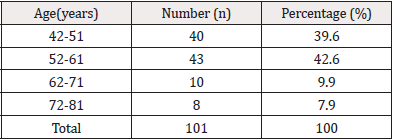
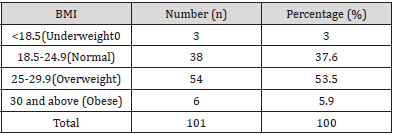
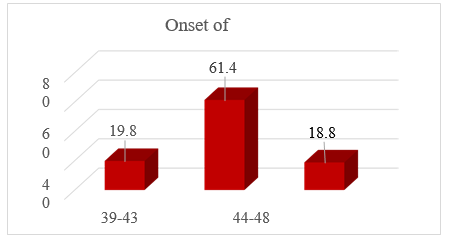

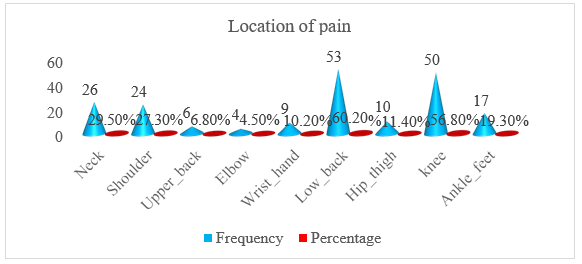
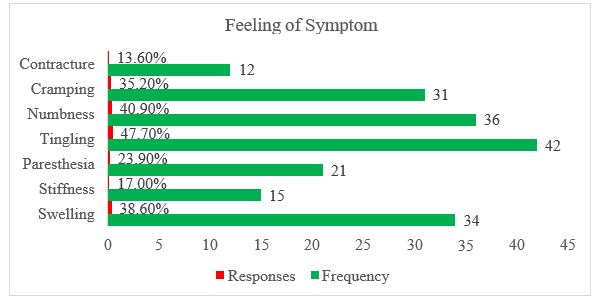


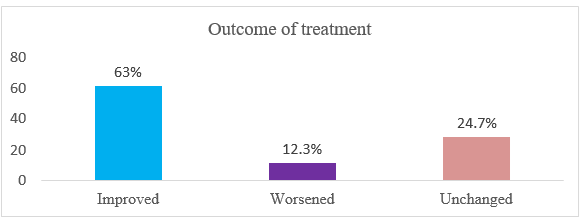


 We use cookies to ensure you get the best experience on our website.
We use cookies to ensure you get the best experience on our website.